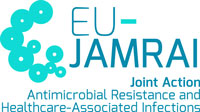Step by step guide for the implementation and assessment of Narrative Learning
Narrative Learning is an educational approach that leverages the power of stories—whether real or fictional, personal or observed, oral, written, or digital—to convey complex information, share experiences, impart lessons and values, foster empathy, and promote deeper understanding and reflection. Storytelling, as a core component, involves the art of constructing and sharing narratives in an engaging manner. Anecdote circles are a specific technique where participants share brief, relevant personal stories or observations around a focused theme or question, facilitating collective meaning-making. In the context of AMR/AMS, Narrative Learning aims to make abstract concepts like resistance tangible, illustrate the human impact of infections and stewardship decisions, and motivate changes in attitudes and practices by engaging learners on both cognitive and emotional levels.

Planning a Narrative Learning
The following steps should be taken into consideration when planning a Narrative Learning experience on AMR/AMS:
- Define AMR/AMS Learning Objectives and Narrative Focus: Clearly identify the specific AMR/AMS themes, learning objectives, or desired attitudinal shifts that the narrative approach will address (e.g., understanding the patient experience with an MDRO, highlighting the importance of prudent antibiotic prescribing, illustrating successful IPC measures, communicating AMR risks to the public). (Nori et al., 2019, used real-world patient stories to engage medical students with AS and AMR).
- Source or Develop Compelling AMR/AMS Narratives:
- Real-world patient/professional stories: Collect and ethically share (with consent and anonymization) authentic stories from patients affected by AMR, healthcare professionals grappling with stewardship dilemmas, farmers who have successfully reduced AMU, or public health officials managing outbreaks. (Nori et al., 2019, used patient stories; Bell and Wozniak, 2024, advocate for showing lived experiences of AMR through digital stories).
- Fictional or Composite Narratives: Develop well-crafted fictional stories or composite case studies based on real events that effectively illustrate key AMR/AMS principles or challenges.
- Participant-Generated Stories: Create opportunities for learners themselves to construct and share their own AMR/AMS-related narratives or reflections.
- Digital Storytelling: Utilize digital tools to create short videos or multimedia presentations that combine images, voice-over, and text to tell impactful AMR stories. (McCall et al., 2023; Bell & Wozniak, 2024).
- Create a Safe and Conducive Environment for Sharing and Listening: Especially when dealing with personal or sensitive AMR experiences, establish a psychologically safe, respectful, and non-judgmental environment that encourages open sharing and empathetic listening. Define ground rules for confidentiality and constructive dialogue.
- Select Appropriate Storytelling Format and Delivery Method: Choose the format based on the audience, objectives, and resources: oral storytelling by a skilled narrator or expert, facilitated anecdote circles, reading of written narratives, screening of video/digital stories, or interactive storytelling sessions.
- Facilitate Structured Reflection and Meaning-Making: After stories are shared, a skilled facilitator must guide participants in structured reflection and discussion. This involves prompting learners to identify key messages, explore emotional responses, connect the narrative to their own experiences or professional roles, analyze underlying AMR/AMS issues, and consider implications for future actions or practice changes. (Cole, 2009, notes storytelling stimulates thought and reflection).
- Anecdote Circles: For this specific technique, pose a clear, focused question related to an AMR/AMS experience (e.g., “Share a brief instance where you felt challenged by an antibiotic request,” or “Describe a small change you made that improved infection control”). Participants take turns sharing very brief anecdotes, followed by group reflection on emerging themes.

Defining roles in a Narrative Learning
Facilitator’s role: Select or guide the development of appropriate and impactful AMR/AMS narratives. Create and maintain a safe and respectful sharing environment. If telling stories, do so engagingly and effectively. Skillfully facilitate post-narrative reflection and discussion, helping participants to deconstruct the story, extract key learnings, make personal connections, and consider application to their AMR/AMS responsibilities. Ensure discussions remain constructive and focused on learning objectives.
Participant’s role: Listen actively, attentively, and empathetically to the stories shared. If sharing their own narratives, do so honestly and respectfully within the established safe space. Engage thoughtfully in reflective discussions, offering interpretations, connecting with the experiences of others, and considering how the narratives and ensuing discussions impact their understanding, attitudes, and potential actions regarding AMR/AMS.

Assessing a Narrative Learning
Methods
- Qualitative Analysis of Reflections: Assessment of written or oral reflections, journal entries, or discussion forum contributions for depth of understanding, evidence of critical thinking, emotional engagement, empathy development, and connection of narrative themes to AMR/AMS principles and personal/professional practice.
- Changes in Attitudes and Beliefs: Pre- and post-narrative session surveys or questionnaires to measure shifts in attitudes towards AMR, antibiotic use, IPC, or empathy towards those affected by resistant infections.
- Observation of Discussions: Facilitator observation of the quality of group discussions, the level of engagement, and the types of insights shared by participants.
- Participant-Generated Narratives: Evaluation of stories or case studies created by learners as an output of the learning experience, assessing their understanding and ability to communicate AMR/AMS concepts narratively.
- Feedback on the Narrative Experience: Collecting participant feedback on the impact of the stories, the effectiveness of the facilitation, and the overall value of the Narrative Learning approach. (Ahmed et al., 2020, evaluated educational theatre for AMR, a form of narrative, using pre/post questionnaires and audience feedback).
Tools
Structured reflection prompts or worksheets. Rubrics for assessing reflective writing or presentations. Validated scales for measuring empathy or specific attitudes related to AMR/AMS. Pre-post knowledge and attitude questionnaires. Qualitative data analysis software for analyzing discussion transcripts or written reflections. Feedback forms specifically designed for narrative-based sessions.

Suggested Narrative Learning prototype
Target Audience: Legislators and Authorities, Food Producers (with established trust and appropriate framing), Wastewater Managers, Dispensers, Prescribers, Clinical Profiles.
Learning Objectives:
- Enhance empathy and understanding of the lived experiences of patients affected by antimicrobial-resistant infections and the impact of AMR on individuals and families.
- Promote critical reflection on the role of healthcare professionals in preventing AMR and managing resistant infections from a patient-centered perspective.
- Strengthen commitment to antimicrobial stewardship principles by illustrating the human consequences of inappropriate antibiotic use.
- Improve communication skills related to discussing AMR and antibiotic use with patients.
Curriculum/Activities:
- Part 1: Experiencing Patient Narratives (Digital Stories): Presentation of a curated collection of short (3-5 minutes each) digital stories featuring real (anonymized and with consent) patient narratives about their experiences with difficult-to-treat resistant infections. These stories would highlight their diagnostic journey, treatment challenges, impact on quality of life, and interactions with the healthcare system. (Inspired by Bell and Wozniak, 2024, on using digital stories for lived AMR experiences, and Nori et al., 2019).
- Part 2: Facilitated Reflective Discussion: After viewing the digital stories, a skilled facilitator leads a structured group discussion using prompts such as:
- “What emotions did these stories evoke for you?”
- “What were the key turning points or challenges in these patients’ journeys?”
- “How do these stories relate to your own clinical experiences or understanding of AMR?”
- “What aspects of antimicrobial stewardship or infection prevention could have potentially altered these patients’ outcomes?”
- “How can we better support patients and families affected by AMR?”
- Part 3 (Optional): Anecdote Circle or Personal Reflection:
- Participants could be invited to share very brief, anonymized anecdotes from their own practice related to challenging AMR cases or successful stewardship interventions (if a high-trust environment is established).
- Alternatively, individual written reflection on how the patient stories might influence their future clinical decision-making or patient communication regarding antibiotics.
Evaluation of the Prototype’s Effectiveness:
- Pre- and post-workshop surveys measuring changes in empathy towards patients with AMR and attitudes towards the importance of AMS.
- Qualitative analysis of transcripts from the facilitated reflective discussions to identify key themes, insights gained, and expressions of empathy or commitment to change.
- Evaluation of participants’ written reflections for depth of understanding and personal connection to the patient narratives.
- Participant feedback on the emotional impact, relevance, and educational value of the digital stories and the overall workshop experience.
- (Longer-term) Follow-up surveys to assess if participants report any changes in their communication with patients about antibiotics or their approach to stewardship decisions.
References
- Ahmed, R., Bashir, A., Brown, J. E. P., Cox, J. A. G., Hilton, A. C., Hilton, C. E., Lambert, P. A., Theodosiou, E., Tritter, J. Q., Watkin, S. J., & Worthington, T. (2020). The drugs don’t work: Evaluation of educational theatre to gauge and influence public opinion on antimicrobial resistance. Journal of Hospital Infection, 104(2), 193–197. https://doi.org/10.1016/j.jhin.2019.10.011
- Appiah, B., Anum-Hagin, D., Gyansa-Luterrodt, M., Samman, E., Agyeman, F. K. A., Appiah, G., Odonkor, G., Ludu, J. Y., Osafo, J., & Rene, A. (2021). Children against antibiotics misuse and antimicrobial resistance: Assessing effectiveness of storytelling and picture drawing as public engagement approaches. Wellcome Open Research, 6, 202. https://doi.org/10.12688/wellcomeopenres.16543.2
- Bell, L., & Wozniak, T. M. (2024). Using Digital Stories to Show the Lived Experience of Antimicrobial Resistance. Studies in Health Technology and Informatics, 318, 184-185. https://doi.org/10.3233/shti240919
- Clark, M. C., & Rossiter, M. (2008). Narrative learning in adulthood. New Directions for Adult and Continuing Education, 2008(119), 61–70. https://doi.org/10.1002/ace.306
- Cole, M. (2009). Storytelling: Its place in infection control education. Journal of Infection Prevention, 10(5), 154–158. https://doi.org/10.1177/1757177409341425
- Hinyard, L. J., & Kreuter, M. W. (2007). Using Narrative Communication as a Tool for Health Behavior Change: A Conceptual, Theoretical, and Empirical Overview. Health Education & Behavior, 34(5), 777–792. https://doi.org/10.1177/1090198106291963
- Kpokiri, E. E., Budak, J. Z., Chang, C. C., Ong, J. J., Mabilat, C., Peeling, R. W., Van Duin, D., & Tucker, J. D. (2020). Innovative strategies to fight antimicrobial resistance: Crowdsourcing to expand medical training. F1000Research, 9 (227). https://doi.org/10.12688/f1000research.22291.1
- McCall, B., Shallcross, L., Wilson, M., & Hayward, A. (2023). Making microbes matter: Storytelling’s potential to make antibiotic resistance real and relevant to the public. npj Antimicrobials and Resistance, 1, 10. https://doi.org/10.1038/s44259-023-00012-5
- Murphy, S. T., Frank, L. B., Chatterjee, J. S., & Baezconde-Garbanati, L. (2013). Narrative versus Nonnarrative: The Role of Identification, Transportation, and Emotion in Reducing Health Disparities. Journal of Communication, 63(1), 116–137. https://doi.org/10.1111/jcom.12007
- Nori, P., Cowman, K., Jezek, A., Nosanchuk, J. D., Slosar-Cheah, M., Sarwar, U., Bartash, R., & Ostrowsky, B. (2019). Faces of Resistance: Using Real-world Patients and Their Advocates to Teach Medical Students about Antimicrobial Stewardship. Open Forum Infectious Diseases, 6(12), ofz487. https://doi.org/10.1093/ofid/ofz487
- Perrier, M.-J., & Martin Ginis, K. A. (2016). Changing health-promoting behaviours through narrative interventions: A systematic review. Journal of Health Psychology, 23(11), 1499–1517. https://doi.org/10.1177/1359105316656243
- Petraglia, J. (2007). Narrative Intervention in Behavior and Public Health. Journal of Health Communication, 12(5), 493–505. https://doi.org/10.1080/10810730701441371
